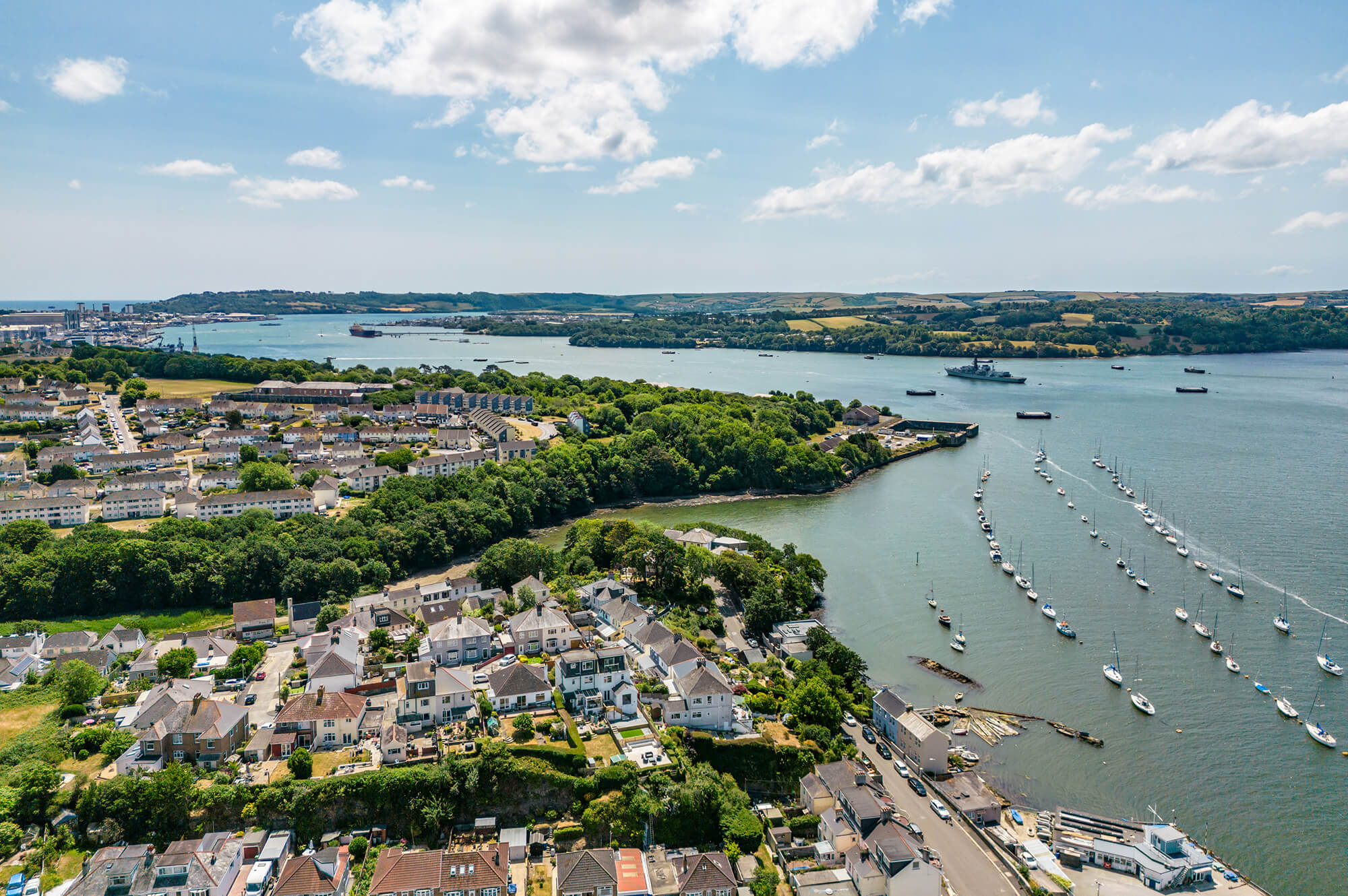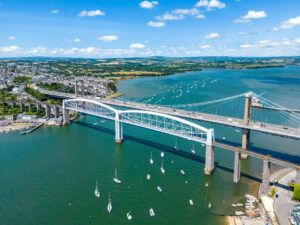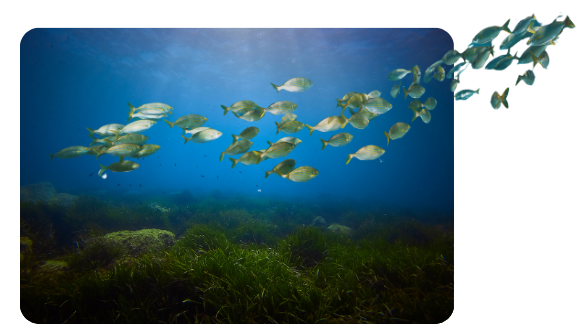Story
Lessons from the Tamar: how PML-led science in Devon is informing international guidance on water management
21 October 2025
UN Source-to-Sea Guidance Note a ‘call to action’ on how we manage our most critical natural systems.

River Tamar, UK
Plymouth Marine Laboratory (PML) has played a key role in developing international guidance that addresses one of the most pressing challenges in water management: the disconnect between what happens on land and its impacts on the Ocean.
With approximately 80% of marine pollution originating on land and travelling downstream through rivers and estuaries, a holistic approach is crucial for protecting both inland and ocean environments.
“Source-to-sea management” recognises that activities far inland – from agriculture, cities and industries – have far-reaching consequences hundreds of kilometres downstream, affecting fisheries, tourism and coastal communities.
Equally, changes in coastal and marine areas can impact upstream businesses and communities.
Developed under the UN Water Convention, the newly launched Guidance Note for the Implementation of Source-to-Sea Management in Transboundary Basins offers the first comprehensive framework for managing interconnected land, freshwater, coastal and marine ecosystems – particularly where these systems cross national boundaries.
Designed for government officials, river basin authorities, regional seas commissions and technical practitioners, the Guidance draws on more than 25 real-world case studies from across Europe, Asia, Africa and the Americas, demonstrating “practical solutions to challenges such as water scarcity, pollution, biodiversity loss, ecosystem degradation and climate change impacts”.
“With over 60 per cent of freshwater flows crossing national borders, transboundary water cooperation is not optional, but essential”
(from the Guidance Note)
Prof. Andy Rees, PML’s Ocean Challenge Lead for Marine Pollution was the scientific lead and author of the case study on the Tamar Catchment in Devon, which highlights research on land-ocean carbon transfer and the AgZero+ project, a major five-year £13.8 million research programme in support of the UK’s transition towards sustainable home-grown food production.
Prof. Rees said:
“The Tamar River catchment here in Devon is a microcosm of global challenges. Covering approximately 1,800 square kilometres in southwest England, it supports 300,000 residents, attracts 11 million tourists annually, and sustains extensive agriculture across 73% of its landscape. This economic activity provides livelihoods and sustains communities, but it also creates pressure.”
“Nutrients and carbon from agricultural land don’t stay put. They flow downstream, through the estuary, and into the English Channel, contributing to eutrophication and greenhouse gas emissions. The impacts ripple outward: what happens on a farm near Tavistock affects fisheries off Plymouth’s coast. What occurs in the estuary influences water quality upstream.”
“Through the Tamar Catchment Partnership – a collaborative platform that brings together farmers, regulators, recreational users, conservation groups and research institutions – PML has worked to understand and manage these interconnections. Projects like LOCATE and AgZero+ track the journey of carbon and nutrients from source to sea, revealing the invisible threads that bind our land and ocean systems together”.

The projects showed that estuary waters can influence water quality from the coast up to 10 km offshore, and that nutrients and organic material from freshwater bodies contribute to the significant release of greenhouse gas emissions (GHG) from estuarine environments.
Furthermore, the data showed that activities on land to reduce GHG emissions from farmlands, such as applying nitrification inhibitors, may result in increased eutrophication of waterbodies.
A key challenge highlighted in PML’s case study was the need to unify data from marine and freshwater research – communities that have historically used different units, methods and standards. Prof. Rees explains:
“These fundamental differences created barriers to information exchange and hampered collaboration. To overcome this, we worked with the broader research community to develop the UniDOM model – a unified framework for concepts, measures and parameterisation processes across freshwater and marine environments.”
“This work really highlights how collaboration between the freshwater and marine scientific communities is crucial to gain a better understanding of linkages along the source-to-sea continuum and the impacts that activities on land have on downstream ecosystems”.
The Guidance Note was developed within the framework of the Water Convention, under the leadership of Estonia, Panama and Slovenia, and emphasises that many source-to-sea systems cross national or regional governance boundaries, making transboundary cooperation essential.
By working together, allocating resources to foster new forms of collaboration, and increasing commitments from the full range of actors and stakeholders involved, it concludes that countries can accelerate progress on shared commitments and generate synergistic effects that optimise benefits for entire systems.
“Benefits of source-to-sea management can span environmental benefits such as restored aquatic habitats or increased carbon sequestration, social benefits such as reductions in waterborne diseases or greater social cohesion, and economic benefits such as increased value of fisheries or a more attractive tourism industry”, said Sonja Koeppel, Secretary of the Water Convention.
“It can also facilitate peace and security benefits by strengthening regional integration and reducing political tensions through increased coordination on shared objectives.”
PML’s further ongoing support of effective Source-to-Sea management includes being a partner organization of the Action Platform Source-to-Sea Management hosted by the IUCN. This Platform is a multi-stakeholder global initiative to exchange and generate knowledge, and support joint action for improved management of land, water, coastal and marine linkages. It builds commitment so that policies and finance stimulate source-to-sea action on the ground, recognising that what is done on land and in rivers, lakes and aquifers can have impacts further downstream, along coasts and in the ocean. Professor Rees is an elected Steering Committee Member for this Platform.
For more information about the Convention please visit: The Water Convention and the Protocol on Water and Health | UNECE.
